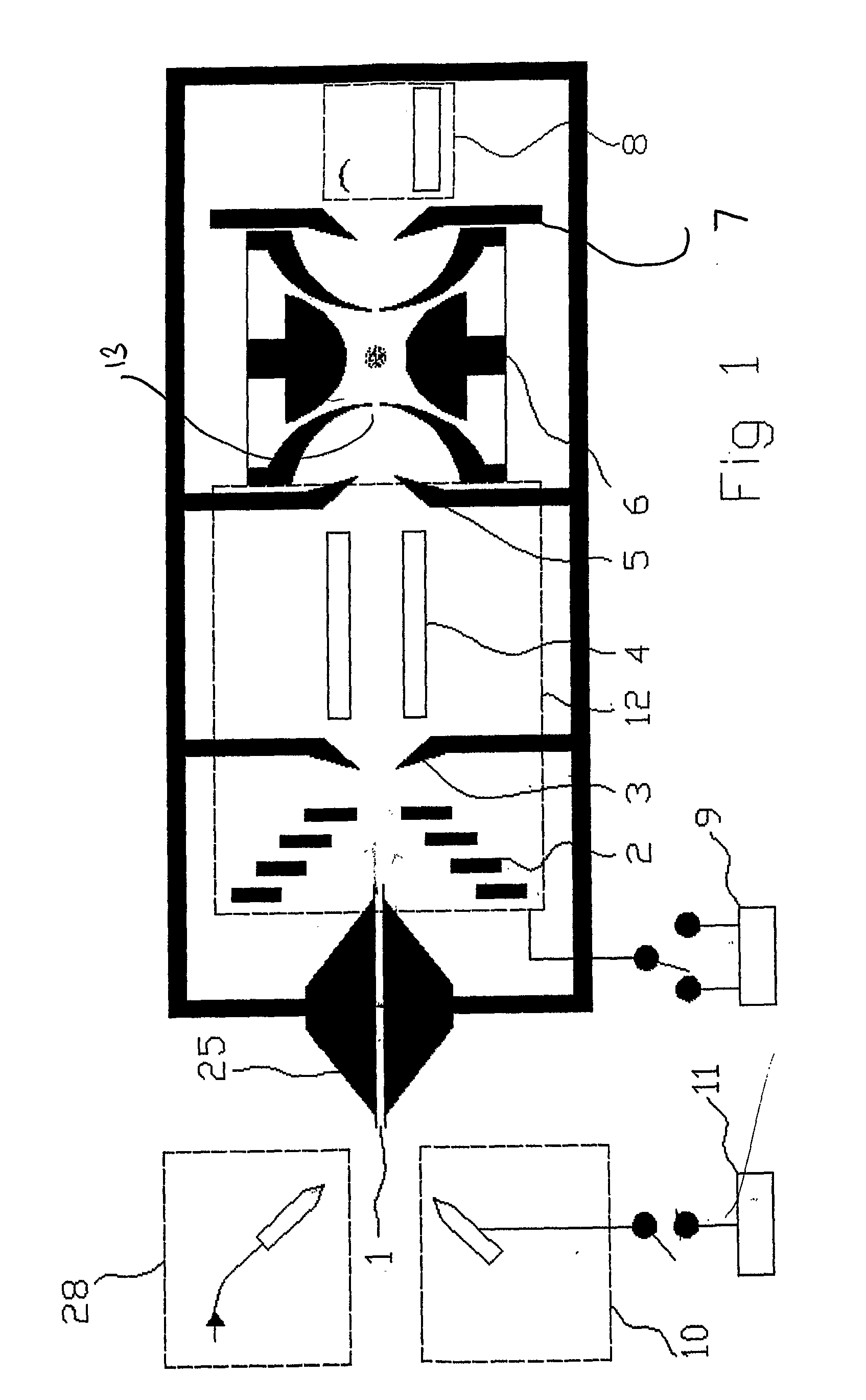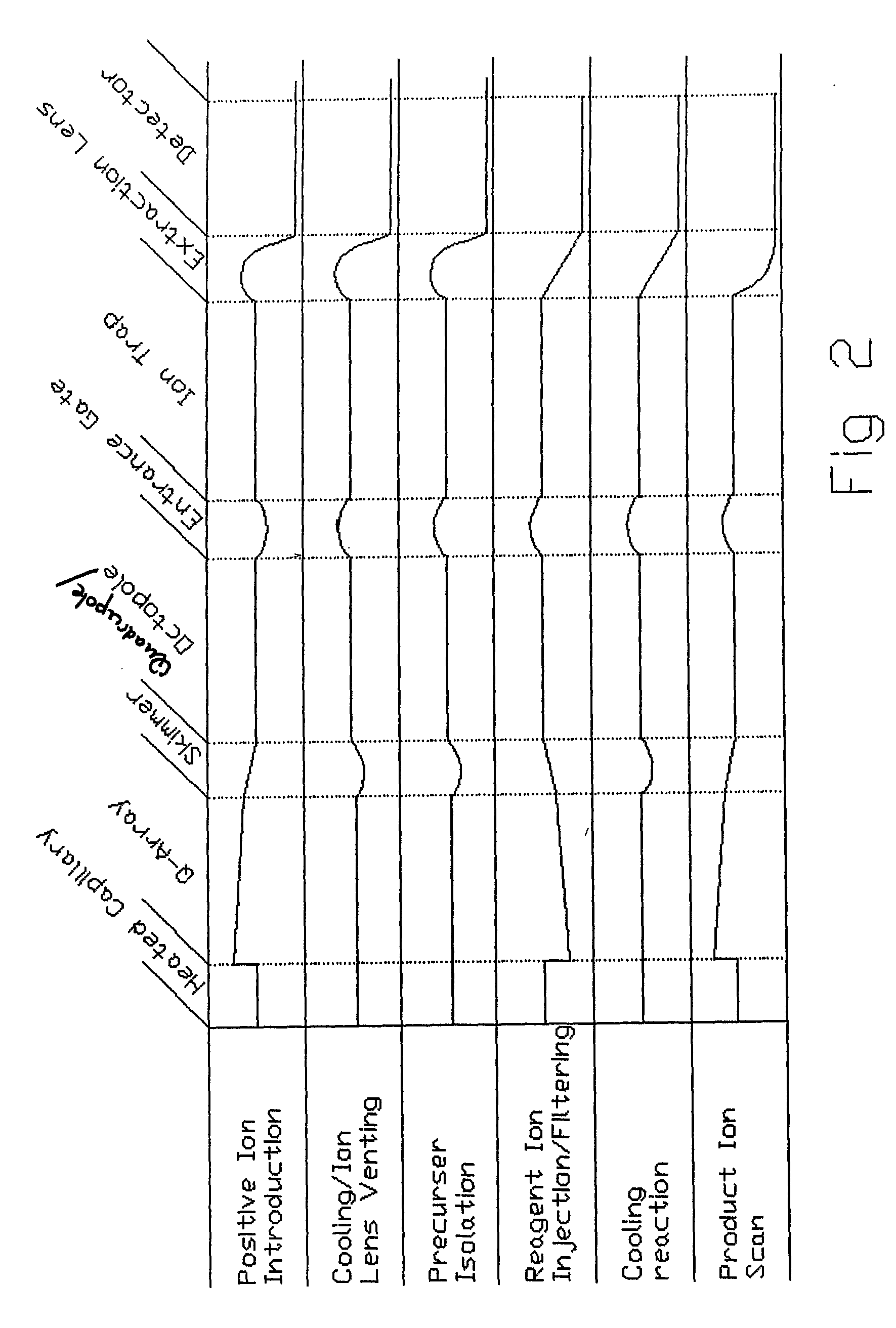Method for introducing ions into an ion trap and an ion storage apparatus
a technology of ion storage apparatus and ion trap, which is applied in the direction of isotope separation, particle separator tubes, mass spectrometers, etc., can solve the problems of limited viability of approaches, difficult to achieve ejection and detection of both anions and cations stored simultaneously in ion traps in typical ion trap configuration, etc., to reduce the size of the ion cloud and mitigate the effect of coulomb repulsion
- Summary
- Abstract
- Description
- Claims
- Application Information
AI Technical Summary
Benefits of technology
Problems solved by technology
Method used
Image
Examples
Embodiment Construction
[0039]As illustrated by FIG. 1, the Ion Trap Mass Spectrometer (MS) typically comprises six parts, namely; an analyte ion source 28, a reagent ion source 10, having a controllable power supply 11, an atmospheric pressure / low pressure interface 25, transmission optics 12 having a controllable voltage source 9, an ion trap 6 and a detector 8.
[0040]Electrospray Ionisation (ESI) is one method commonly used to generate singly and multiply charged ions from an organic sample solution. This type of ion source is often used as a link between a Liquid Chromatograph (LC) and a Mass Spectrometer (MS). The atmospheric pressure / low pressure interface 25 is used to pull wet charged particles from the ESI into the vacuum chamber of the MS and dry them, through the so-called desolvation process. The atmospheric pressure / low pressure interface may be in the form of a heated capillary / ion inlet, as illustrated by 1 in FIG. 1, or alternatively a number of cone shaped apertures, between which a heated ...
PUM
 Login to View More
Login to View More Abstract
Description
Claims
Application Information
 Login to View More
Login to View More - R&D
- Intellectual Property
- Life Sciences
- Materials
- Tech Scout
- Unparalleled Data Quality
- Higher Quality Content
- 60% Fewer Hallucinations
Browse by: Latest US Patents, China's latest patents, Technical Efficacy Thesaurus, Application Domain, Technology Topic, Popular Technical Reports.
© 2025 PatSnap. All rights reserved.Legal|Privacy policy|Modern Slavery Act Transparency Statement|Sitemap|About US| Contact US: help@patsnap.com



